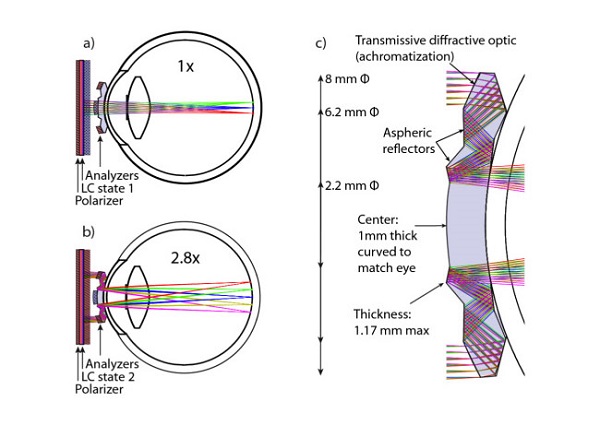Contact lenses have always been a convenient and fashionable way of aiding vision, but the ability to zoom in and out much in the same way the Terminator did would make these so much better.
Because of some eye conditions I’d rather not disclose, I’ve worn eyeglasses since the age of four. Needless to say, I always wished I could wear contact lenses instead, as the thick lenses made me a target for bullies from the first grade up until high-school. Luckily, modern medicine saved me, and after a surgical intervention, I only need glasses for near vision. However, the telescopic contact lenses developed by scientists from UCSD (University of California, San Diego) and EPFL (École Polytechnique Fédérale de Lausanne) could help not only people with vision problems, but also the ones who simply want to be capable of zooming.

Joseph Ford of UCSD and Eric Tremblay of EPFL explain that the telescopic contact lenses do not feature some complicated mechanism like the one present in cameras. Instead, the lenses include an optical path for magnifying and a separate one for unmagnified vision:
“We present design and first demonstration of optics for a telescopic contact lens with independent optical paths for switching between normal and magnified vision. The magnified optical path incorporates a telescopic arrangement of positive and negative annular concentric reflectors to achieve 2.8x magnification on the eye, while light passing through a central clear aperture provides unmagnified vision.
We present an experimental demonstration of the contact lens mounted on a life-sized optomechanical model eye and, using a pair of modified commercial 3D television glasses, demonstrate electrically operated polarization switching between normal and magnified vision.”

The 2.8 optical zoom of these 1.17mm thick telescopic contact lenses might not be much, but it’s still better than not being able to zoom at all. I hope that researchers will one day develop contact lenses with better, adjustable zoom. I’m not saying that the current effort isn’t worth some appreciation. On the contrary, it’s a great starting point that opens the way for future development. Maybe Google’s next-gen Glass (supposing there will ever be one) will enable wearers to zoom as near or as far as they wish, besides the current features. Updating your status on social networks via your contact lenses would be absolutely great, don’t you think?
If you liked this post, please check the Eidos sensory augmentation equipment and DARPA’s prosthetic arm with sensory perception.










